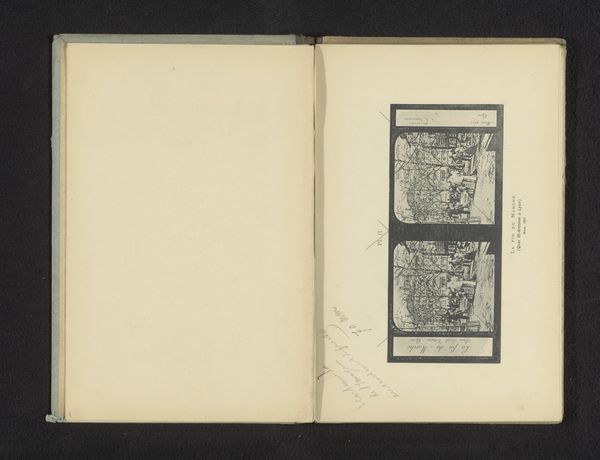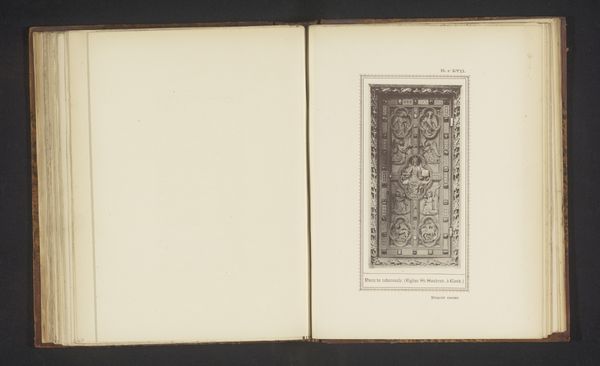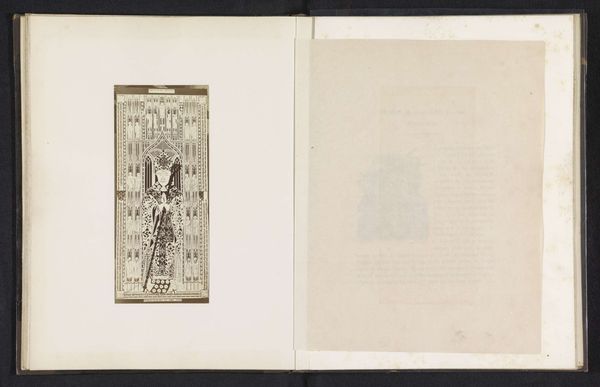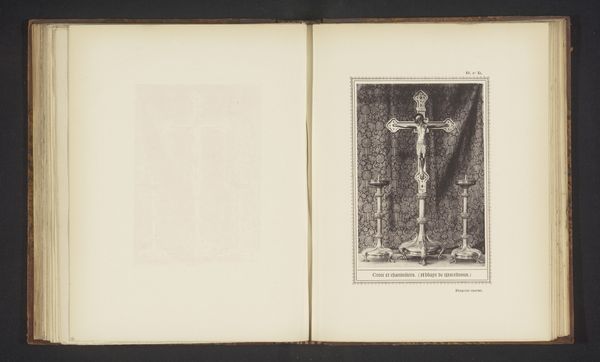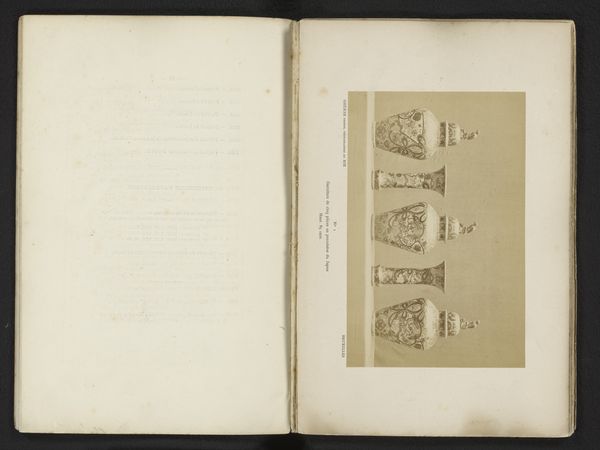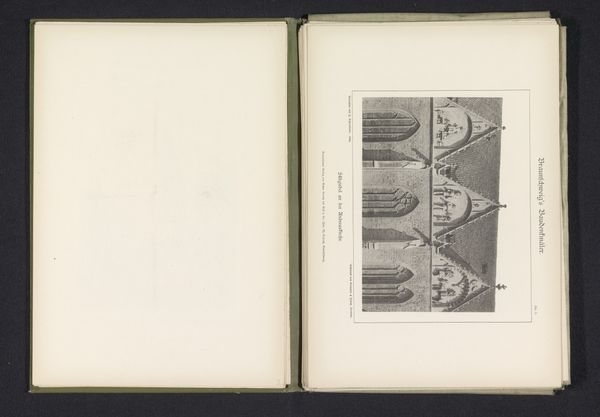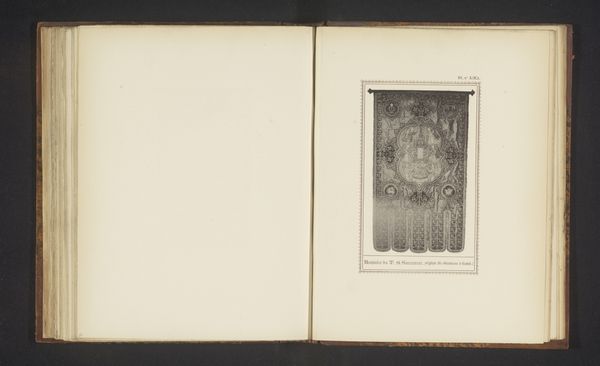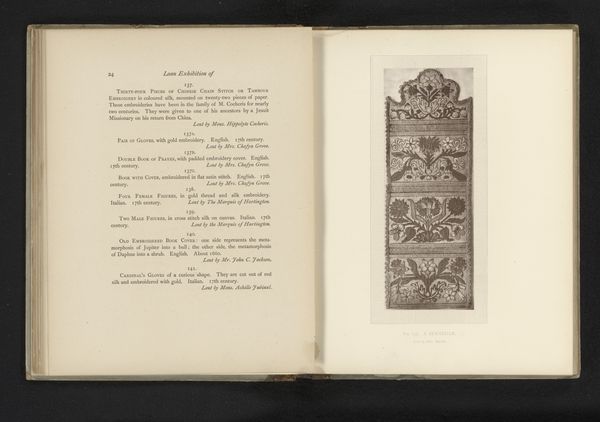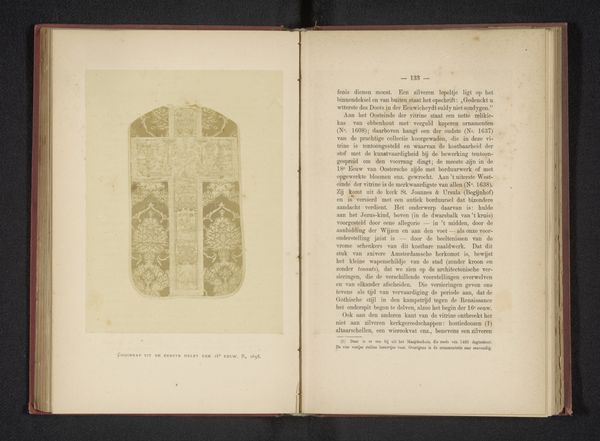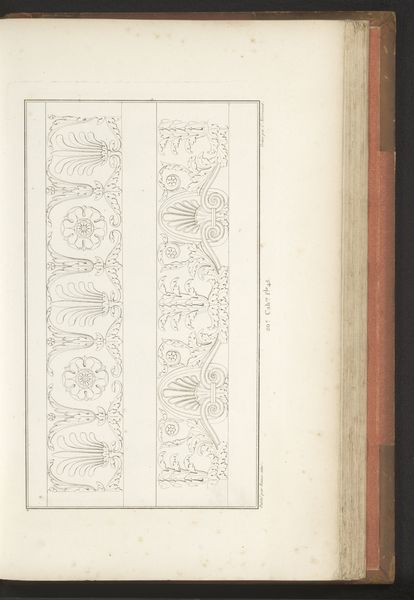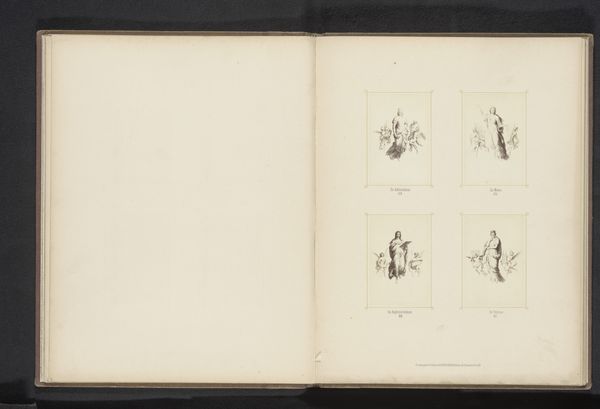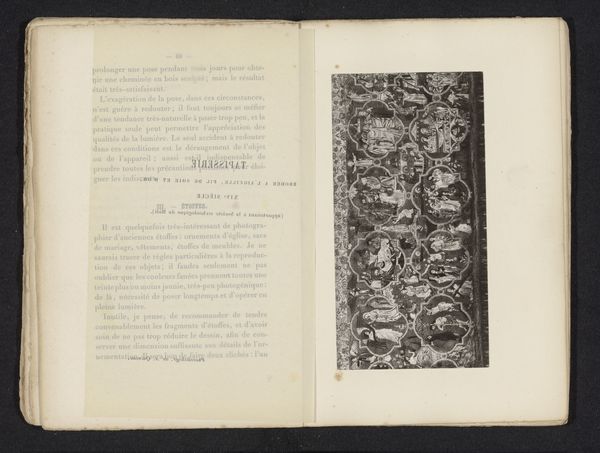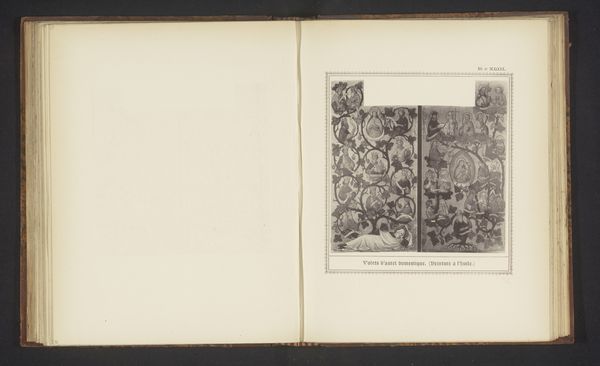
Gebrandschilderd raam in de Onze-Lieve-Vrouwekerk in Kortrijk, België before 1896
0:00
0:00
Dimensions: height 201 mm, width 84 mm
Copyright: Rijks Museum: Open Domain
Curator: Today we are looking at a photographic reproduction of a stained glass window located in the Onze-Lieve-Vrouwekerk in Kortrijk, Belgium, created before 1896. It's from a book of photographs by Joseph Casier. Editor: My initial impression is that despite being a photo, it evokes a certain sacred feeling. The verticality, the segmented scenes, the intricacy—all contributing to this overwhelming sense of gothic ambition, of reaching for something beyond the mundane. Curator: Indeed. Stained glass windows such as these were an essential component of Gothic architecture. The windows served as a didactic tool, illustrating biblical stories for a largely illiterate populace. This is less about the objective representation and more about what values are imposed or intended. Editor: Absolutely, it’s a masterful combination of aesthetics and purpose. I find the figures in the panels especially intriguing—their postures and the subtle details of their clothing hint at an entire narrative frozen in light and glass. The framing of the photographs reminds the viewer it's being presented as information as well. Curator: The proliferation of Gothic art in this region speaks volumes about the prevailing social and religious structures of the time. These artistic forms and methods served as symbols of cultural cohesion, as a manifestation of divine principles governing civic life and individual conduct. Consider what message stained glass has compared to printed text. Editor: So you mean in terms of access and interpretation? Curator: Yes. While these panels might have originally intended to deliver a moral message, over time they also begin speaking of identity. This reproduction has a more historical identity than artistic identity, it seeks to place it in time rather than outside of it. Editor: This photographic reproduction provides access to these intricate works even outside the physical space of the cathedral, making the art and its stories far more accessible than before. What a marvelous, complex example of both design and cultural record. Curator: The way such craftsmanship represents its values in form can still provide lessons and perhaps insight. I think that sums up both my formal and historical considerations of this window—and photograph!
Comments
No comments
Be the first to comment and join the conversation on the ultimate creative platform.
